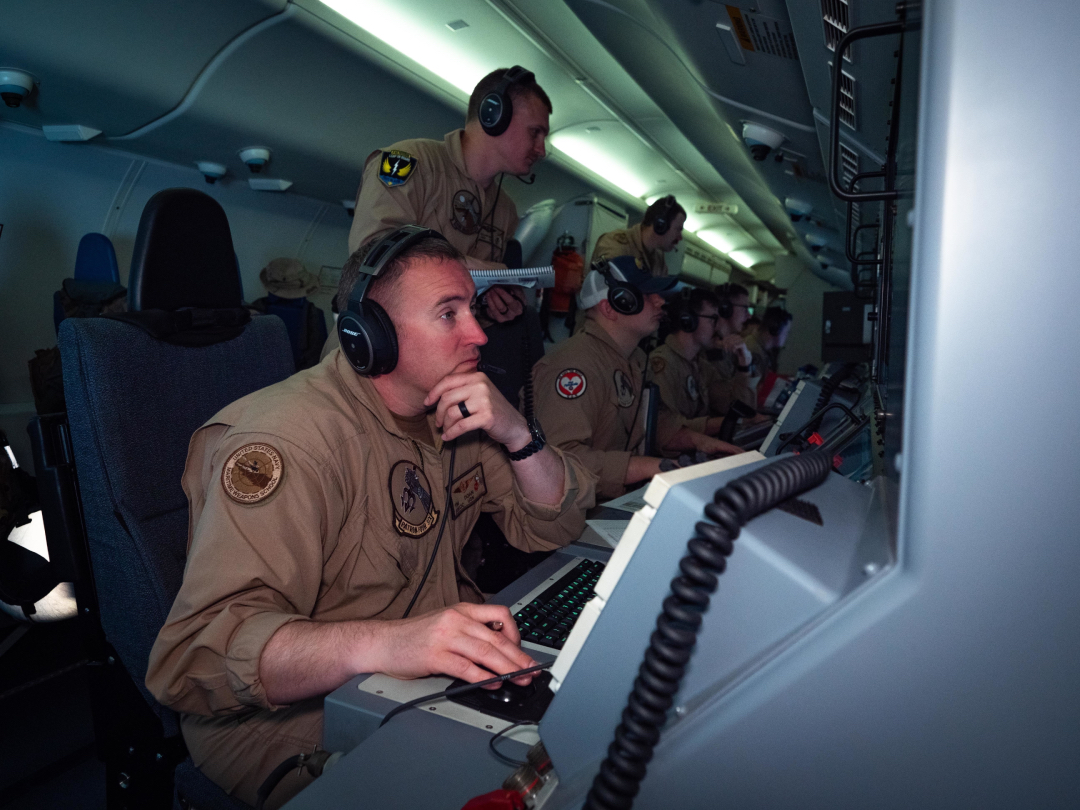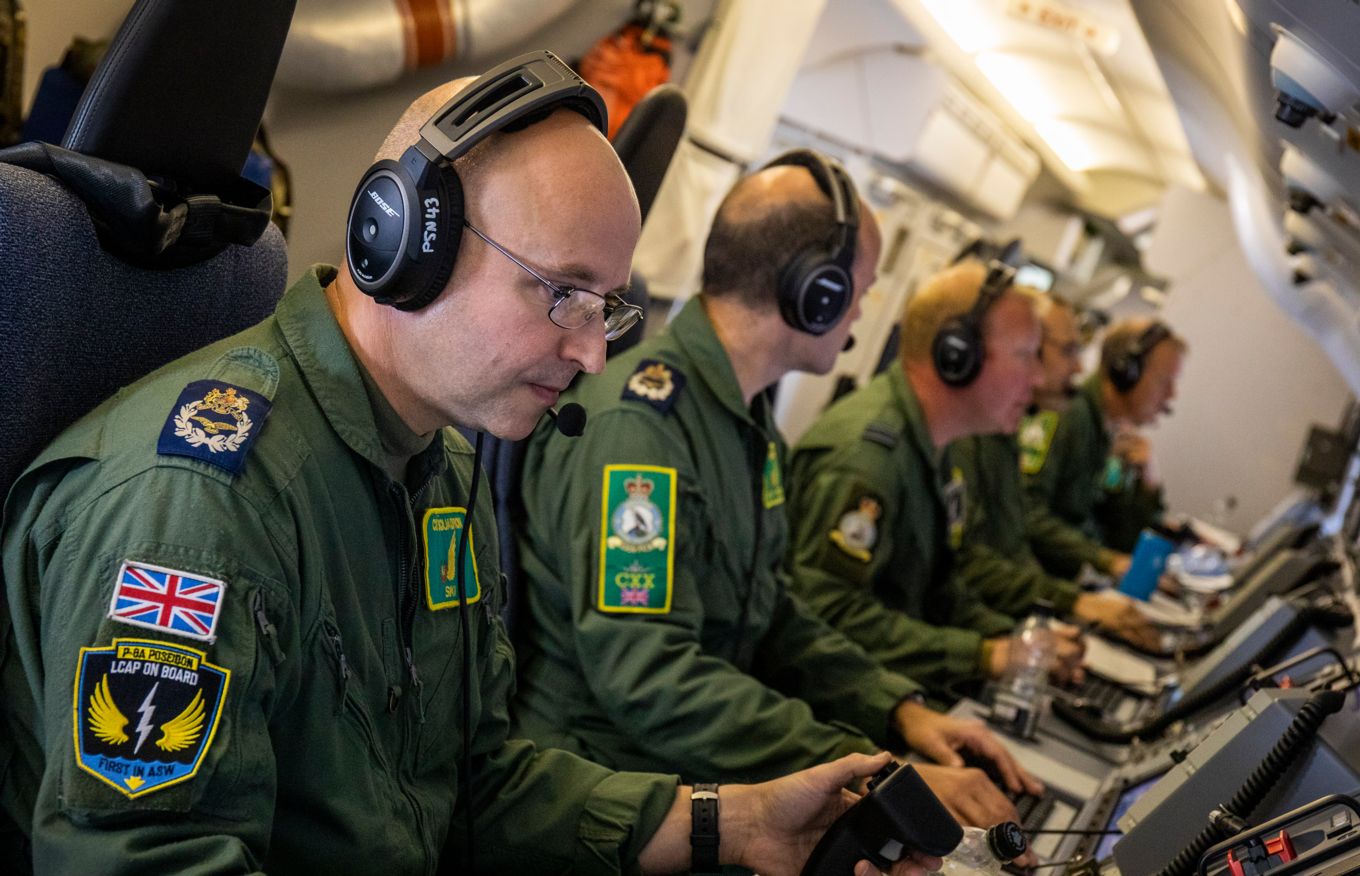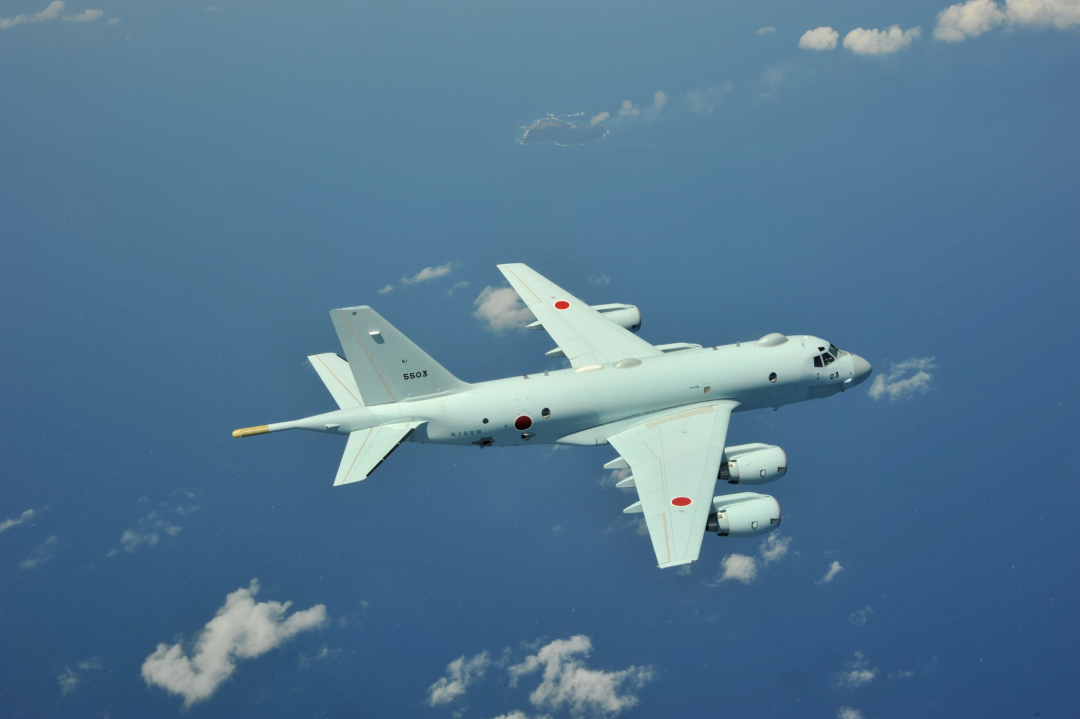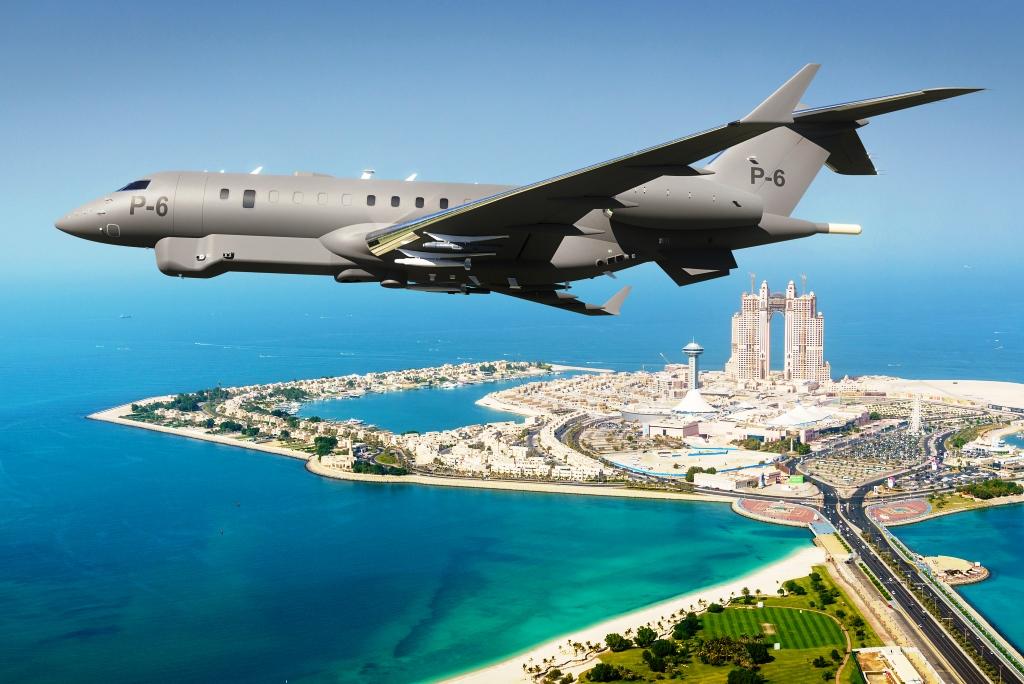
The submarine club is growing in size; so cue the entry of a new maritime patrol platform.
At the height of the Cold War, most of the world’s leading airborne anti-submarine warfare (ASW) exponents operated big turboprop-powered Maritime Patrol Aircraft (MPAs). Most of these were developed from trans-continental turboprop airliners – the P-3 Orion from the L188 Electra, the Ilyushin Il-38 from the Il-18, and the Canadair Argus from the Bristol Britannia. Britain ploughed its own furrow with the jet-powered, Comet-based Nimrod, while France and Germany produced the clean-sheet of paper twin turboprop Atlantic.
But when the time came to design a new generation of MPAs, there were no intercontinental turboprop airliners. Instead, manufacturers developed new MPAs from regional turboprops, which tended to be slower and shorter-ranged, which makes them poorly suited for long range, oceanic, blue water missions.
The exceptions were the BAE Systems Nimrod MRA.Mk4 (which replaced the Hawker Siddeley MR2) and the Boeing 737-based P-8A Poseidon, both of which had Cold War roots. The Nimrod programme failed after significant investment, leaving the P-8A as the only available, new production, very long range ASW platform.
In some respects, the P-8 seemed like a poor choice for the ASW role, since the 737 design, with its podded underwing engines, is not ideally suited to the kind of low-level manoeuvring that once characterised ASW operations. Boeing and the US Navy (USN) have compensated for this by developing new equipment and weapons, new concepts of operations (CONOPS) and new tactics, techniques and procedures (TTPs), which are together claimed to make it possible to conduct ASW operations from medium level.
Many would point out that the importance of traditional ASW had, in any case, diminished with the end of the Cold War, and that wide area surveillance and ISR (ensuring maritime domain awareness) were now of more importance than sub-hunting – and the P-8 excelled in these roles.

Though Airbus looked at a number of MPA and special missions derivatives of the A310, A319 and A320, none of these entered development, and Boeing’s P-8 was left with something of a clear run and, in the absence of a serious competitor, the Poseidon enjoyed conspicuous success on the export market. In addition to orders for 128 aircraft for the USN, Boeing achieved sales to India (12 delivered from 2013), Australia (12 from 2016), the United Kingdom (9 from 2020), Norway (five from November 2021), New Zealand (four from December 2022), South Korea (six on order), and Germany (five on order, with seven more planned).
Boeing has now delivered more than 155 P-8As and P-8Is, of 185 now on firm order (or planned). This means that, without further orders, and with a minimum viable annual production rate of 12 aircraft, the production line could close within three years. Boeing is actively pursuing market opportunities in a number of countries, but is unlikely to build ‘white tails’ on spec, nor to keep the line open at a lower rate, and we could see a situation similar to that the company experienced with the C-17, in that there could be potential demand, but the line will still be closed without firm orders.

MPA Gap?
Some competitors sense that there could soon be a ‘jet MPA gap’ looming, perhaps providing opportunities for other long range MPAs. “Now is the time for a market filler,” Mahmoud El-Awini, PAL’s vice president of business development told Asian Military Review at the IDEX defence expo in Abu Dhabi this February..
With a renewed focus on Russian undersea warfare capabilities in the face of an intensifying ‘new Cold War’ together with a growing submarine threat from China, there is a real need for any new MPA offerings to have robust ASW capabilities, and not merely to be ISR-heavy MPAs conducting the ‘bread and butter’ MPA roles of maritime ISR, including counter-piracy, and maritime counter terrorism.
China’s submarine fleet includes six Jin-Class (Type 094) Ballistic Missile Submarines (SSBNs), six Shang-Class (Type 093) Nuclear-powered attack submarines (SSNs) armed with torpedoes, cruise missiles and YJ-18 anti-ship ballistic missiles and 44 diesel-electric attack submarines (SSKs), 17 of which are Yuan-Class (Type 039A or Type 041 submarines with air-independent propulsion (AIP) systems. Moreover, China has exported advanced submarines to Bangladesh, Myanmar, Pakistan and Thailand, so there has already been some proliferation of advanced submarine technology in the Pacific.
Japan’s Kawasaki P-1 could perhaps represent a potential ASW ‘gap-filler’. The Japanese aircraft is claimed to be a more capable, albeit more expensive, aircraft than the Boeing P-8 Poseidon, and one that was purpose-built from the ground up for the maritime patrol and ASW roles. The two aircraft were broadly contemporary – the P-1 making its first flight on September 28, 2007 while the P-8 flew on April 25, 2009. Since then, the P-1 programme has progressed more slowly, with a much slower production rate.
The P-1 has some commonality with the C-2 transport, including some cockpit panels, the auxiliary power unit, the flight control system computer, anti-collision lights, and also major structural sub-assemblies, including the cockpit windows, outer wings, and horizontal stabiliser. None of this compromises the aircraft’s operational capabilities, however, which are formidable.
Though Japan has relatively little experience of exporting defence equipment, it has made some efforts to export the P-1, offering the type to the UK, Thailand, New Zealand, France, Germany, and Vietnam. Although it has failed to win an order so far, it has impressing many of those charged with evaluating it. This is perhaps not surprising, as the P-1 has a longer range, a larger bomb bay, and more underwing stores stations than the P-8.
The P-1 is equipped with a Toshiba HPS-106 X-band active electronically scanned array (AESA) radar which uses three antennas to provide 240 degree coverage, and has an electronic support measures (ESM) system, while a Fujitsu HAQ-2 FLIR turret is fitted below the nose. For underwater targets, the P-1 has a CAE magnetic anomaly detector (MAD) in the tail, and advanced acoustics processing with an NEC HQA-7 Acoustic Processor, an HRQ-1 Sonobuoy Receiver, an HQH-106 Acoustic Data Recorder and an HAS-107 Sonobuoy Controller. The aircraft has a Shinko Electric combat system, optimised for ASW, and using AI to reduce the workload for the tactical co-ordinator.
By comparison, only the P-8Is delivered to India are fitted with MAD, and these also have a second radar to provide a full 360 degree field of view, whereas US and other operators rely on the mechanically-scanned multifunction APY-10 radar, which has a much smaller field of regard.
But the Kawasaki P-1 will not be available to all potential operators, in part because of cost, and in part because of Japanese export rules and potential restrictions. Using bizjet platforms as the basis of new MPAs is nothing new, though most such aircraft have lacked offensive ASW capabilities, and have primarily been maritime patrol and ISR aircraft. Examples include the Dassault Falcon 20, 200, 50M, 900MPA, and 2000MRA, and Boeing’s MSA (Maritime Surveillance Aircraft).

Bizjet MPAs
The use of bizjets for ASW has been enabled by the development of smaller, lighter mission, command, control and communications and sensor systems. These require less cooling and less power and are easier to integrate making it possible to conduct ASW with smaller, more efficient, more lightly-manned aircraft platforms, than traditional long range LRMPA/ASW aircraft like the Kawasaki P-1 and Boeing P-8, which are expensive to buy, operate and support, and which impose a heavy manning burden on operators.
The first of a new generation of proposed armed bizjet-based MPAs was the IAI/ELTA ELI-3360, announced in February 2015. The same mission systems had previously been offered on a Bombardier DHC-8, using the same designation. The new ELI-3360 was a modified Bombardier Global 5000 business jet fitted with an ELTA ELM-2022 maritime patrol radar, an electro-optical sensor and the ELL-8385 ESM/ELINT system, together with a comprehensive communications suite that included radios, datalinks, and broadband SATCOM as well as an advanced electronic warfare and self-protection suite. Underwing hardpoints were included for a range of weapons, including torpedoes and anti-ship missiles, and the package was later offered on other high performance business jet platforms including the Bombardier Global 6500 and CL650.
Saab followed the same pattern with its Swordfish MPA, which built on the company’s work on the Saab 340 Maritime Security Aircraft. The company offered a Saab 2000-based MPA to India and the UK, from 2012 branding this as the Swordfish.
In February 2016 Saab announced that it would integrate the Swordfish maritime patrol system on the Bombardier Q400 turboprop regional airliner and on the Global 6000 business jet, the latter leveraging commonalities with the GlobalEye Swing Role Surveillance System AEW aircraft. The Swordfish used the same mission management system, electronic warfare and self-protection systems, AIS and most of the same communications systems as the GlobalEye, and both aircraft have the same belly-mounted Selex Seaspray 7500E 360 degree maritime surveillance AESA radar and FLIR Systems Star SAFIRE 380HD EO/IR sensor turret.
Whereas the P-8 undertakes ASW from medium to high altitude, relying on the use of multiple receiver buoys in a multistatic field to allow wide-area searches, Saab optimised the Global 6000-based Swordfish for the demands of low-level ASW operations.
While operating at higher altitudes can extend the range of some sensors, as well as saving fuel, and enhancing crew comfort, ASW operations may often make it necessary to descend to low level. Electro-optical/infra-red (EO/IR) sensors give better resolution at closer ranges and lower altitudes, and require the aircraft to be below the cloud layer, while dropping sonobuoys from higher levels risks damage to a buoy as it descends by parachute through precipitation and weather, while the precision with which buoys can be dropped will be negatively affected by launching them at higher altitude. There will consequently be increasing difficulty in ensuring the ‘security of pattern’, and there may be poor accuracy in placing any infill buoys. While the radio link to and from a sonobuoy may be picked up from longer range by a high-flying MPA, there will be a significant danger of greater RF interference.
The use of a MAD to pinpoint the location of a submerged submarine can only be achieved at low level. Many believe that MAD remains a viable and indeed vital ‘confirmation sensor’, especially useful if Rules of Engagement (RoE) do not allow an attack to be carried out using acoustic information alone. For all these reasons, many believe that it is at low level that the ASW game is truly won or lost. Operating at low altitude allows an ASW aircraft to react more quickly to a submarine’s manoeuvres, and minimises the time it takes to get a buoy into the water and a weapon if then required.
Saab claimed that the Global-based Swordfish provided P-8A levels of capability at 70 percent of the flyaway cost and 50 percent of the life cycle costs.
In most respects, the Swordfish and the P-8A were closely matched, with the Saab aircraft having an edge in several key areas. Both aircraft had 5-6 mission consoles, though Swordfish had a 360 degree AESA radar and a MAD. Swordfish had a marginally longer range and slightly longer endurance, and carried slightly more sonobuoys, (or many more if G- or F-sized buoys were used). With its mix of underwing pylons for ASMs and an internal weapons bay, the Poseidon carried a heavier warload, though the Swordfish could actually carry one more torpedo!
However, Saab stopped actively marketing Swordfish in 2018, and has no plans to dust off its Global-based MPA, preferring to concentrate on core products – including the GlobalEye AEW&C aircraft, the Gripen fighter, submarines, surface radar, and land warfare offerings.
But a new Global-based ASW aircraft has now emerged, and its creators believe that the PAL Aerospace P-6 MPA is the right aircraft “to address the next-gen MPA gap,” according to Keith Stoodley, the chief executive officer of PAL Aerospace.
Abu Dhabi-based PAL is seeking a launch customer for its Global 6500-based P-6 maritime patrol aircraft, and it expects to find one ‘soon’. A number of local air forces are known to be looking to increase their MPA/ASW and maritime ISR capabilities in the face of growing surface and sub-surface maritime threats. Saudi Arabia has long been linked with a requirement for the P-8, for example, while the UAE could also be a candidate. With its Canadian heritage PAL Aerospace is believed to have been closely following the Canadian Multi-Mission Aircraft (CMMA) programme, which is aiming to find a replacement for Canada’s ageing fleet of CP-140 Auroras. The effect of Canada’s recent decision to submit a Letter of Request for up to 16 Boeing P-8A Poseidon aircraft via the US government’s Foreign Military Sales program remains to be seen.

The P-6 bears some similarity to the Global 6000-based Swordfish concept once offered by Saab, but PAL Aerospace hopes that the market may now be more ready to accept a twin-engined bizjet-based ASW aircraft.
Many elements of the P-6 concept remain undefined (as these will depend on customer requirements). Though PAL says that they are platform and systems agnostic, the aircraft is based on the Global 6500 and is being designed in partnership with Thales. PAL and Thales signed a strategic agreement for the development of the new mission management system software that will be used by the P-6 on 30 March 2022, and Thales radar and sonobuoys are expected to form the basis of the initial baseline configuration.
The aircraft will offer a 360 degree radar (which will not be the Ocean Master fitted to the company’s P-4 MPA, and which may be an AESA), an EO/IR sensor, a lightweight MAD as well as ESM and COMINT systems, radios, datalinks and satcomms. The aircraft is intended to go ‘in harm’s way’ and will therefore incorporate a sophisticated defensive aids sub-system including radar and IR warning receivers, chaff/flare dispensers and two Directional Infrared Countermeasures (DIRCM) effector turrets which will together provide spherical (360 degree) coverage.
The P-6 will carry between two and six underwing stores stations and also incorporates an innovative ventral pannier, with the search radar (forward), then a box-like ‘flex bay’ and then a fairing containing the retractable EO/IR turret and mounting various antennas. The flex bay will be able to carry torpedoes, anti-ship missiles or SAR kits.
The aircraft is designed to accommodate between three and eight operator workstations, (though company CGI images show five workstations) with two visual observation stations further forward. The operator stations will leverage the company’s work on the Q400-based P-4 MPA, now in service with the UAE Air Force and Air Defence. This commonality promises to allow crews to be cross-trained on both types. This is significant, says CEO Keith Stoodley, because: “we view the P-4 and P-6 as complementary products. The P-4 has been designed as a littoral ASW asset whereas the P-6 is designed as a blue-ocean ASW asset.”
PAL’s Keith Stoodley states: “The P-6 MPA brings next-gen technology and regional expertise to the table, providing nations with a highly adaptable and advanced blue-water maritime patrol solution.” It will be interesting to see whether this eminently sensible ASW solution finds a market, and whether it – and aircraft like it – end up plugging the looming jet MPA gap.
by Jon Lake












